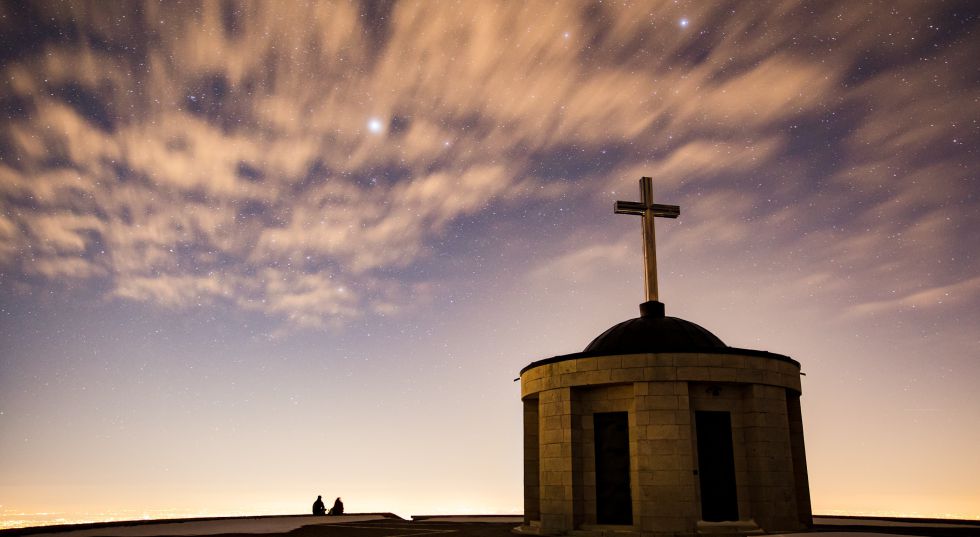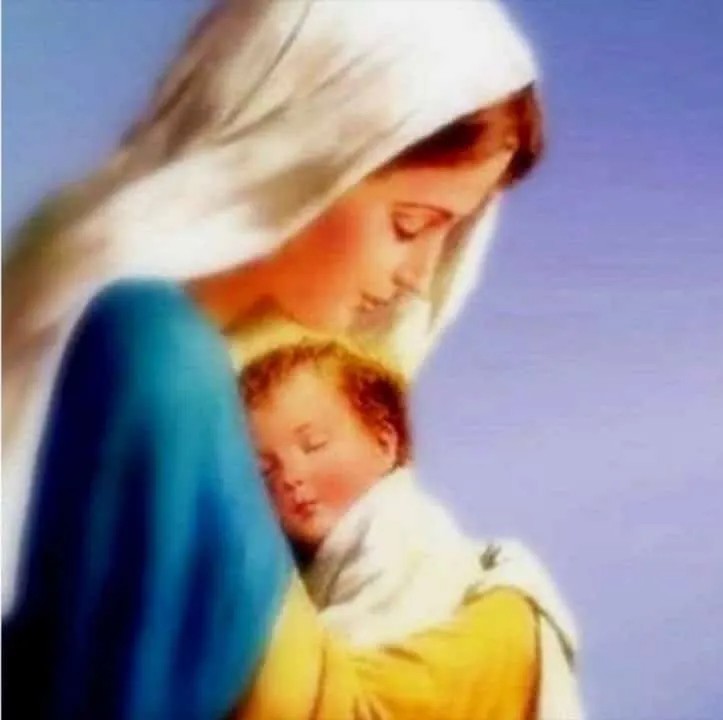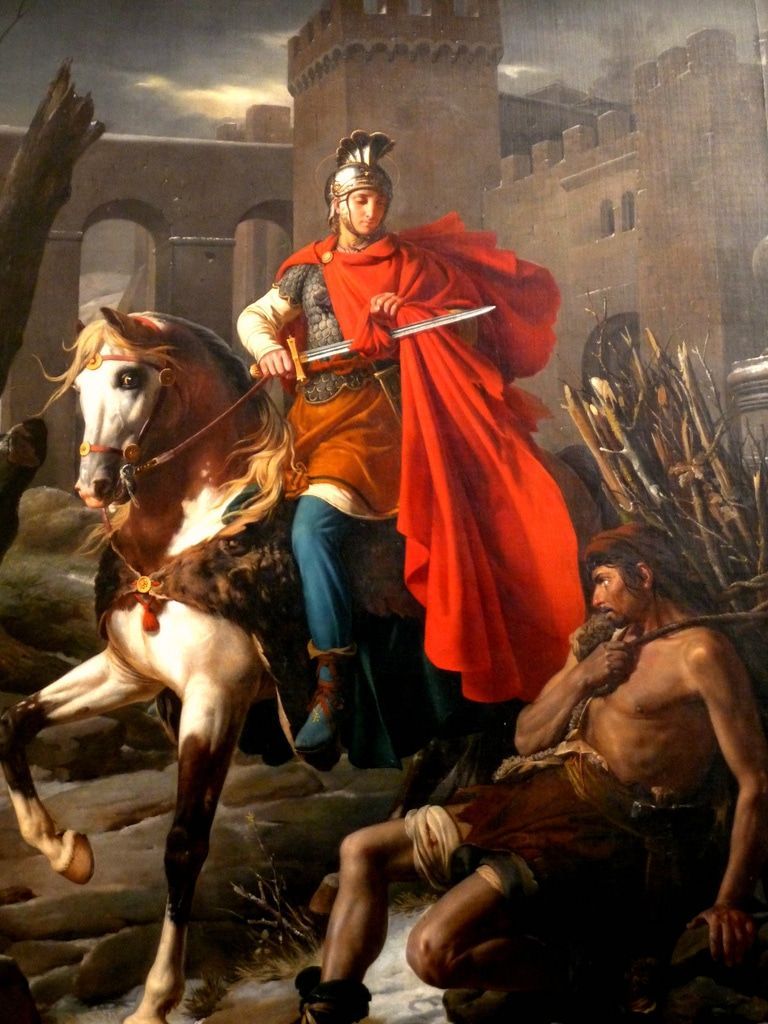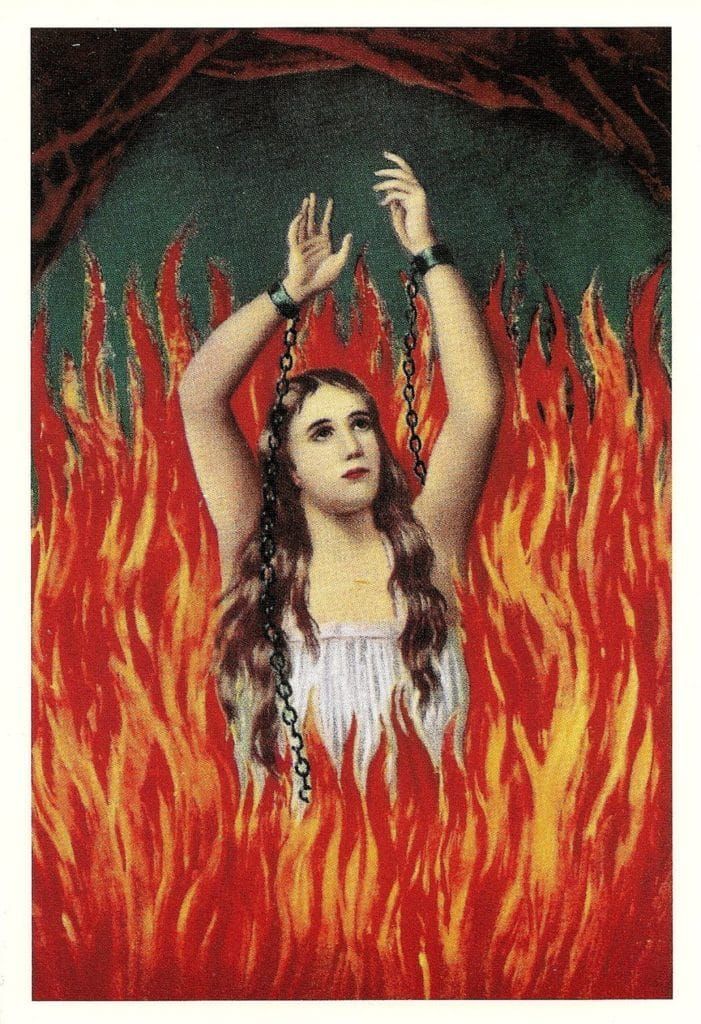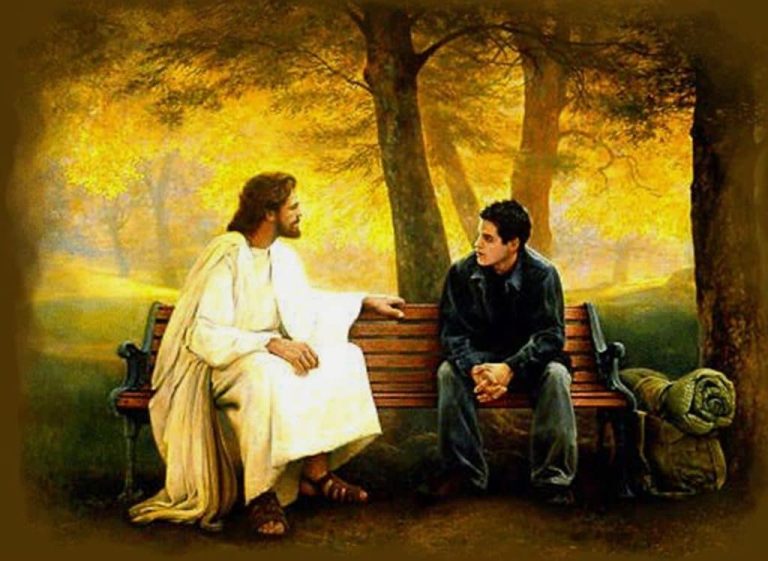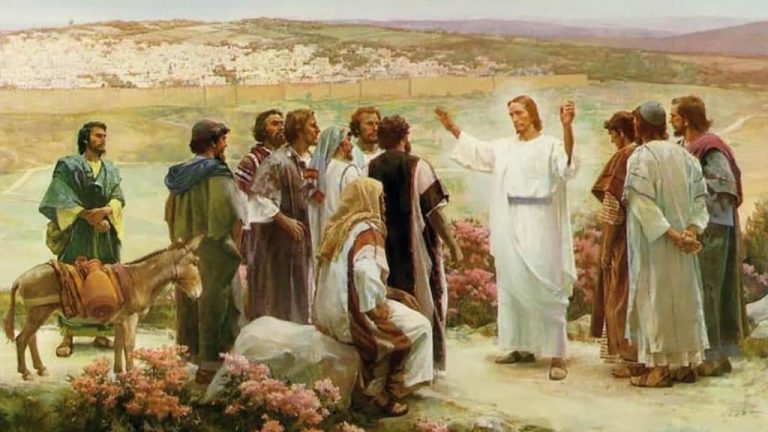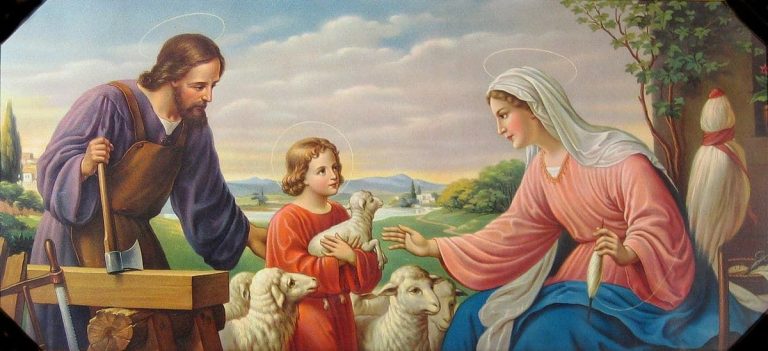The Creation of God According to the Holy Bible
Learn through this article everything related to the creation of God , as well as the creation of the world according to the Bible . We will provide you detailed and simple information here.
God’s Creation
God’s creation is quite an interesting subject to study. According to the Holy Bible, God created everything that exists in the universe in just six days, and rested on the seventh; that is, on Saturday. The beginning of God’s work is narrated through a story known as Genesis, which means “beginning”.
The biblical account shows this account where each day of God’s creation took 24 hours, without adding periods of time between the days. That is why, by reading the Holy Bible carefully, the Hebrew grammar of the original text allows most scholars to conclude that the event of the creation of the world according to the Bible was done continuously and uninterrupted, for a whole week.
This obviously opposes existing scientific theories about the origins of the universe, such as the theory of evolution carried out by Charles Darwin.
Genesis
The biblical narrative of the creation of Genesis is a story that deals with the origins of heaven and earth, including plant life, animal life, man, woman, among others. Within this story, God is given the role of creator of everything that exists. This belief is important to religions like Judaism as well as Christianity.
In the first story of Genesis, Elohim, the Hebrew word used to refer to God, creates the heavens and the earth during the first six days. When the seventh day arrives, he rests, blesses and sanctifies said day.
In the second story, God, now referred to by the personal name YHWH, proceeds with different creations, beginning with Adam, the first man; created from the dust, he places it in the Garden of Eden and there gives him control over the animals. Later, the first woman, Eve, is created from Adam’s body and becomes his companion.
Adapting the themes of Mesopotamian mythology to the belief of the people of Israel in a single God, the first complete draft of the Pentateuch, that is, the series of five books that begin with Genesis and culminate with Deuteronomy; it was made at the end of the 7th century BC, or in the 6th century BC.
After its original creation, it was expanded by different authors, such as the priestly source, turning it into a work quite similar to the one we have today, the Holy Bible. The two sources can be identified through the creation narrative. Genesis 1:1-2:3 is priestly and Genesis 2:4-2:24 is Yahwist.
The story with said mixed narrative is a critique of the Mesopotamian theology of creation, since Genesis confirms monotheism, while denying polytheism. Robert Alter described this combined narrative as compelling in its archetypal aspect and its adaptation of this myth for monotheistic purposes.
The Genesis creation narrative created a great misunderstanding, since the intention of the authors and the culture in which they wrote this work, possibly results in an incorrect reading, giving rise to a misinterpretation of the text, even today. day. A well-known evangelical scholar named Bruce Waltke warns others about one such misreading.
Waltke warns that the approach that reads as history instead of theology leads to creationism and, consequently, the denial of evolution. Jewish studies expert Jon Levenson wonders how much history there is behind Genesis, since the action of early history is not represented in this account as taking place within ordinary human history. Additionally, it has strong similarities to ancient mythology. This author states that it is highly exaggerated to refer to these narratives as historical.
The main point that the mentioned authors want to make is that yes, we must believe in God’s creation, and being religious, we must also speak of God’s creation to children , but always accepting that other origins may exist, being objective , without falling into fanaticism.
day 1 of creation
On the first day, God created the heavens and the earth. The word heaven refers to everything that goes beyond the earth. That is, what is in outer space, in the universe. The first day does not specifically explain what the earth is made of, however, it does mention that by that time, water has already been created.
Later, God separated the light from the darkness, naming the light day and the darkness night. In turn, the creator made the light last every day, at least for a few hours, just as he made the light last another number of hours.
In Genesis 1:1, it says that in the beginning God created the heavens and the earth, which allows believers that, according to the biblical text, God is before anything that exists, that is, he did not need matter. preexistent for the creation of the world. In this text, the idea of pantheism is refuted, which affirms that God is equal to every created thing, that he is found in every atom and molecule of the universe.
It is said throughout the text that the earth was formless and empty. This implies that its elements were mixed, but they had no life, much less an order. The creation of light occurs because without it life cannot exist, therefore it makes sense that its presence was necessary for the later stages of God’s creation.
Additionally, light is often related to the divine presence in the Bible, with the phrase “God is Iez.” In the beginning there was only darkness in our land without form, but in verse number 4 it is explained that God separated the light from the darkness. Now both exist, but separately. Light is day and darkness or darkness is night, as we mentioned earlier.
In the original text, the expression says “it was late, it was tomorrow, day one.” Despite other opinions, such a statement from the original text of Genesis gives the idea of a 24-hour day literally, not figuratively. This way of perceiving a day was later followed by the Hebrews, who began and ended each day of the week with sunset.
This account of the creation of God, where he conceives the literal astronomical days, does not agree with the theory of evolution, which establishes that the earth was actually formed in millions of years, through an evolutionary process. These seven days of creation are repeated in Exodus 20:11, when giving the ten commandments.
This is one of the many theories regarding the creation of the world and the creation of the universe, everything around us and everything that exists. Similarly, many people adapt this to their own beliefs, as there are those who think that God is present in everything that exists around us. Because that is what faith is about, about feeling our creator firmly within us and in all the places where we are. He is there for us, he sees our actions and hears our prayers.
day 2 of creation
On the second day, God created the sky. This functioned as a barrier to separate the water in the earth’s atmosphere from the water in the moisture found in the sky, thus creating a firmament. Throughout the text on the second day, God commanded expansion in the midst of the waters, and separate the waters from the waters.
Thus it expanded and separated the waters that were below it and those that were above it. God called the expanse Heavens. And the evening and the morning were the second day. By expansion, the text also refers to the firmament. This second day was about its formation. During the second day, the creation of hell is also said to have happened, so it should not be said that God saw what was good at the end of the day.
day 3 of creation
It is believed today that, when speaking of the waters that were on the expansion, it refers to water vapor, but in very different conditions from the current ones. When we are told about Heavens, it means atmospheric heavens, those that cover our earth like a great dome. With their presence, they could harbor the plant and animal life that would be created in the days to come. Rāqîa is the word translated as expansion. It comes from rāqa, which is the verb used for the act of striking metal into thin plates. It was created on the second day, populated by luminaries in the fourth. It is, as we mentioned earlier, the solid dome that separates the earth below from the sky and its waters above.
This belief is similar to the Egyptian and Mesopotamian of that same time. In Genesis 1:17, the stars are set in the expanse. In Babylonian mythology, the heavens are said to have been made of precious stones, with the stars embedded in the surface. The objective of the expansion was also to gather below it, the dry or arid. He called the arid element earth, while he called the gathered waters seas.
Likewise, he said that the earth should produce green and abundant grass, that it give fruitful plants that contain their seed on earth. So it was. With this, trees of different species were also produced, and each one had its seed, as well as the rest of the plants. In this way, God saw that what he had done was good.
day 4 of creation
During the fourth day of God’s creation, he said: Let there be luminous bodies or celestial bodies in the firmament of the sky, with the aim of distinguishing day and night. In turn, these would help the inhabitants of his creation to point out the times or seasons, days and years.
The heavenly bodies, called stars, were to illuminate the earth from the firmament of heaven, and it was done that way. In turn, God created two great lights: the greater light to appear during the day, and the lesser light, to preside over the night, in addition to the stars, which he placed along the expanse or firmament so that their radiance shine on the earth that he had created over four days.
And so, by separating the day from the night and creating the stars to illuminate the earth at night, the fourth day ended. Various phenomena originating within this creation of time and seasons are the solstice and the equinox, for example.
day 5 of creation
On the fifth day of creation, God commanded the waters to create reptiles to live within them, and waters to fly over the earth, under the firmament of heaven. In turn, he created great fish, produced by all the waters according to their different species, as well as everything that is volatile according to its kind.
In Egyptian and Mesopotamian mythologies, the creator must fight against sea monsters before having the possibility to build the sky and close it. In Genesis 1:21, the word tannin , sometimes translated “sea monsters” or “great creatures”, is related to the so-called monsters of Chaos Rahab and Leviathan of Psalms 74:13, Isaiah 27:1 and lastly, Isaiah 51:9. However, in the Genesis narrative nothing is mentioned about combat, and the tannin are just creatures created by God. He did not have to fight against them to continue with his creation, on the contrary, according to the biblical text, they were created by him.
Thus he blessed both the birds in the sky and the fish under the water, asking them to multiply and grow. In this way, with the afternoon and morning, the fifth day ended.
day 6 of creation
On the sixth day, the living animals were created, in each kind domestic animals: reptiles and terrestrial beasts, according to their species.
With domestic animals, the text refers to the animals of men. Likewise, he created different species of land animals. He divides them into beasts, serpents, and land animals. This statement is similar to that formulated by the theory of evolution, which states that higher forms of life evolved from lower ones.
Finally, God decided to create man in his image and likeness. He gave him the abilities to dominate the creatures of the sea, the birds of the sky and the beasts, the whole earth and every reptile that moves on it. In the original text, God says “let us make man”. This gives us a glimpse of the nature of the Godhead, which is more than one being: God, Christ, and Holy Spirit.
God created male and female, giving them his blessing, ordering them to grow and multiply. He gave them all the herbs necessary to feed themselves, water to hydrate themselves, and all the tools necessary to dominate all the animals on earth.
Day 7 of creation: divine rest
Upon completing all his creations in six days, God rests on the seventh, sanctifying it. He places man in paradise and forms Eve, his mate. All the heavens and the earth were finished. On the seventh day, God completed the creation of him.
That day he rested and ceased everything he had started. She sanctified him because she had ceased in him from all the works that she had left well created. From the beginning, God had planted an abundant garden of plants with sweet and delicious fruits, in which he placed the man he had formed.
Likewise, from the same earth that he had created, all kinds of trees with different soft fruits were born, and also the tree of life in the midst of paradise, as well as the tree of the knowledge of good and evil. From the place of delights came a river created to irrigate all of paradise, a river that from there divided into four arms.
The first is called Physon, which circulates around the entire country of Hevilat. Gold is found in this country, very fine gold, as well as bdellium and corner stone. The second river is called Gehon. Surround the land of Ethiopia. Tigris is the name of the third river, which runs towards the Assyrians. Lastly, the fourth river is the Euphrates.
Thus God took man and placed him in paradise to cultivate and guard him, since he does not want man, even though he is provided with everything, to spend time in idleness. He must attend, even then and after his descendants, to the cultivation of paradise. With weariness or fatigue, because he suited his happy state. He also explained to him that he should eat, from the fruits that he wanted, from the trees that he wanted. However, he was not to eat from the tree of the knowledge of good and evil, for if he did, he would infallibly die.
God also said that it is not good for man to be alone, so he decided to help him and create a company similar to him. Seeing him alone, he ordered him to recognize each species that was already on earth and give each one a name, so that each animal had his own name. However, in none of them did he find Adam a companion for him.
Therefore, God caused him to fall into a deep sleep, and while he was sleeping, he took out one of his ribs. He put skin and flesh on that emptiness. And from the rib that he had taken out, the Lord God formed the woman, whom he set before Adam. He did not remove the woman from Adam’s head or from his feet, implying that she should not be the man’s mistress or slave, but his equal, his companion.
She has been called female because she has been taken from man. For her the man will leave his father and his mother, for he will be united to his wife and they will become one flesh, two souls in one body.
On the other hand, there existed in paradise an animal much more cunning than the rest of the animals that God had created. And it was she who asked the woman “why has God told you not to eat from all the trees in paradise?” The woman clearly replies that they do eat the fruit of the trees, however, the fruit of the tree that is in the middle of paradise, because if they do, they will die.
But the serpent argued that they certainly would not die. God knows that at any moment they will eat of it, their eyes will open and they will be like Gods, capable of knowing everything, both good and evil. So the woman saw the fruit that was on that tree, so delightful in her eyes, and she ate of it. She likewise gave her husband a bite.
Then the eyes of both of them were opened. Noticing that they were naked, they sewed and arranged fig leaves, and began to use aprons or girdles. Hearing the voice of God, who was walking through paradise after noon, he hid with his wife.
Listening to the call of the Lord, asking Adam where he was, he explained that, hearing his voice, he hid very ashamed because he was naked. Amazed, God asks: «but who warned you that you are naked, if it was not the fruit of which I told you not to eat?». Adam confessed that it was the woman who gave him the forbidden fruit. Therefore, God asked the woman the cause of her horrible deed.
“The serpent has tricked me, and I have eaten,” said the woman. God subsequently cursed the serpent for what he had made of her, condemning her and the rest of her kind to crawl on her breast and eat dirt for the rest of her life. He put enmities between man and woman, between her race and his offspring. The woman would break her head, and he would lie in wait for her heel.
In the woman she would multiply her miseries and labors in her pregnancies, she would give birth with pain and would be under the command of her husband: he would dominate her.
Characters of the creation of the world according to the Bible
One of the important aspects of the creation of the world according to the Bible, is knowing and taking into account each character that was part of said process. It is important to emphasize that this moment is found during Genesis, so the protagonists of this process are the first Hebrews.
- God: of course, the presence of this character is constant throughout the biblical text, as well as his influence at the moment of the creation of everything that surrounds us, since he and his strength were what allowed the appearance of the world .
- Adam and Eve: They were the first humans created on planet earth. At first, they are in paradise but God expels them.
- Noah: he is one of the key characters around the whole story. He built a great ark where he had to put the animals of the earth, in order to save them from a great flood.
- Abraham: is considered the father of the Israelites. He is a man of faith, who follows all the divine orders of God.
- Isaac: son of Abraham.
- Jacob: is also known as Israel and is the son of Isaac.
- Joseph: one of the sons of Isaac, who had 11 other children.

Hello! Let me enthusiastically introduce myself as a dedicated blogger fueled by an intense passion for meticulously crafting insightful and well-researched blogs. My mission revolves around providing you, dear readers, with a veritable treasure trove of invaluable information.

